#southern hawker
Explore tagged Tumblr posts
Text


Southern Hawker/blågrön mosaikslända. Sätraskogen Nature Reserve in Stockholm, Sweden (September 8, 2013).
334 notes
·
View notes
Text

Grzimek's Animal Life Encyclopedia: vol. 2 - Insects. Written by Dr. Bernhard Grzimek. 1984.
Internet Archive
1.) Southern hawker (Aeshna cyanea)
2.) Orthetrum sp.
3.) Broad-bodied chaser (Libellula depressa)
174 notes
·
View notes
Text






5th October 2024: Fly agaric, amethyst deceiver, views and other mushrooms at Denny Wood in the New Forest on one of my greatest ever days for observing mushrooms with so many seen, colourful and entrancing delights of autumn and fuchsia and sedum in the garden.
We also visited Matley Wood and Bolton's Bench today seeing stunning and enigmatic devil's fingers, deceivers, waxcaps, gorgeous yellow stagshorn, panthercap, false death cap, bleeding fairy helmet, earthball and lichen and moss well too. Late Swallows including flying extremely close to the ground enjoyed and looking very colourful in the sun, Marsh Tit, Long-tailed Tit, Jay, Rook, Red Admiral, Southern Hawker, bell heather, tormentil and lesser spearwort were other highlights in the forest with the Raven I saw at Lakeside yesterday seen flying past the house and Goldfinch including young highlights at home today.
#fungi#mushrooms#outdoors#home#fly agaric#yellow stagshorn#devil's fingers#amethyst deceiver#false death cap#waxcap#2024#new forest#england#uk#hampshire#southern hawker#world#birdwatching#autumn#october#photography#macro#europe#colourful#nature
6 notes
·
View notes
Text
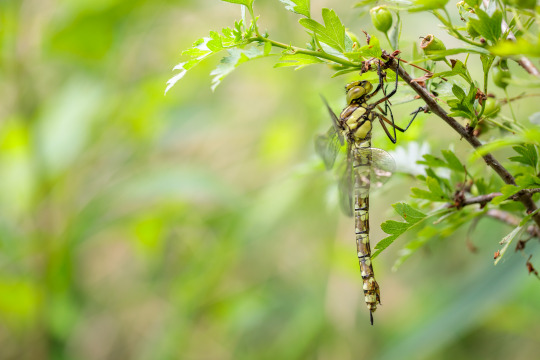
Southern Hawker Side View
Side view of a southern hawker dragonfly, perched on a hawthorn branch at RSPB Fowlmere.
#aeshna cyanea#cambridgeshire#canon#canonuk#dragonflies#dragonfly#fowlmere#insect#insects#invertebrate#invertebrates#minibeast#minibeasts#nature#nature reserve#outdoors#rspb#rspb fowlmere#southern hawker#summer#wildlife
4 notes
·
View notes
Text
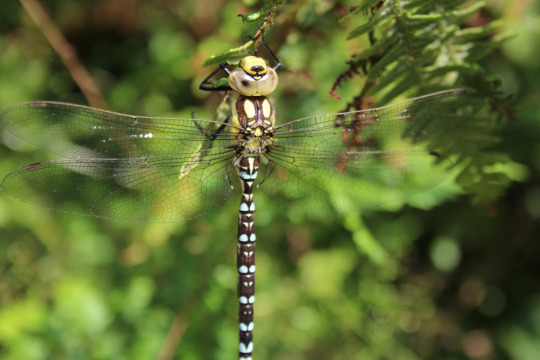
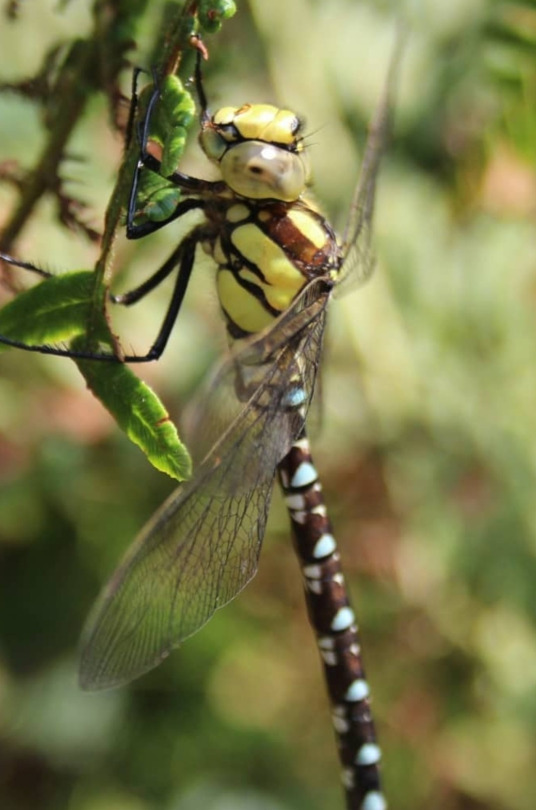
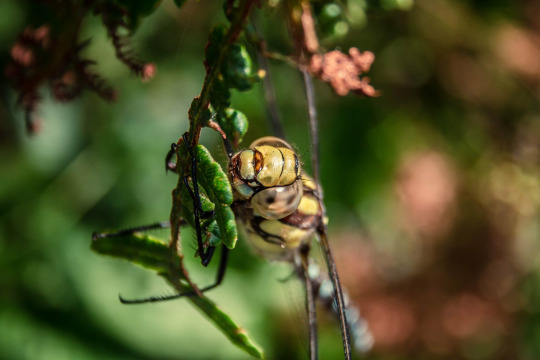
southern hawker dragonfly, sidobre, france, 2021 definitely my favourite photos I have ever taken. such a cooperative little guy. so beautiful
10 notes
·
View notes
Text

Southern Hawker (Aeshna cyanea), family Aeshnidae, found across most of Europe and into Western Asia
photograph by Thomas Herzog
468 notes
·
View notes
Text
Part 10
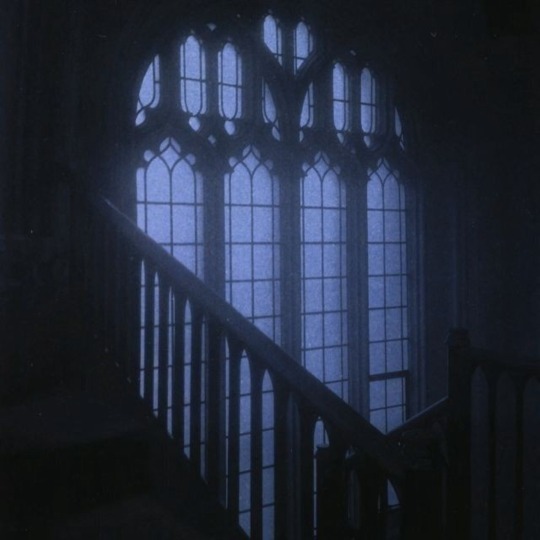
Part 9
Prince x Fem Reader
Tittle: Changing the Fate of the Third Prince
It’s been nearly two weeks since you arrived in Vallora, a bustling trade city in southern Selvaris. At first, everything felt unfamiliar—the cacophony of the marketplace, the rich aroma of spices wafting through the air, and the mingling sounds of merchants’ laughter and hawkers shouting to advertise their wares. But gradually, you’ve begun to adjust to the rhythm of this city, so different from the rigid formality of Zantheria’s capital.
Your days in Vallora are filled with work, an escape from the memories of the capital. As your family’s representative, it’s your responsibility to ensure the success of their new trade branch. You meet countless people—local merchants, sea captains from far-off lands, and even city officials eager to curry favor with your family.
One of the people you frequently work with is Arlen, a local spice trader. A man in his early thirties, Arlen is warm and full of laughter. He often helps you navigate the complex network of Selvaris trade and offers advice on understanding the local culture. His cheerful and open demeanor makes you feel at ease, though you still maintain some distance.
There’s also Lila, a young woman who owns a silk shop in Vallora’s main market. Lila has become a friend you visit whenever you’re exhausted or simply want someone to talk to. She reminds you of Selina—kind-hearted, lively, and full of warmth.
Despite all the new faces you’ve encountered, a hollow ache lingers in your chest. Each night, when the day’s busyness fades, you return to your room on the upper floor of a family-owned trade house. In the quiet solitude, your thoughts inevitably drift back to the capital. Back to Raphael.
You’ve tried not to think of him. You’ve worked hard to forget. But the memory of his face, the deep timbre of his voice, and the small moments you shared together haunt you still. You know you made the right choice—leaving the capital and giving him the freedom to pursue his own happiness. Yet, deep down, the ache of longing refuses to fade.
Every morning, you walk through the market, meet with merchants, and review the financial reports for your family’s branch. Your days are busy, but there are moments when you find yourself standing at the edge of the docks, gazing at the endless expanse of the sea, wondering if Raphael ever thinks of you the way you think of him.
“Daydreaming again?” Lila’s voice snaps you out of your thoughts one afternoon as you inspect a stack of silk in her shop. You offer her a faint smile, masking your emotions.
“Just tired,” you reply shortly.
“Of course you’re tired. You work as if the world is ending,” Lila retorts, folding a silk cloth neatly. “You don’t have to prove yourself to anyone here. We’re all already impressed by your dedication.”
You simply smile, but the truth is that this hard work isn’t to prove anything to anyone else. It’s for yourself—to convince yourself that leaving the capital, and leaving Raphael, was the right choice.
---
Unbeknownst to you, Raphael is now only a day’s journey from Vallora.
He’s thought of you the entire way, his sharp eyes fixed on the map that marks your last known location. His expression is cold, but behind that mask rages a storm of emotions. Anger, betrayal, and longing swirl within him, relentless and unyielding.
The knights accompanying him know better than to ask too many questions. They simply follow their prince’s orders, even when he pushes the pace, traveling through the night to close the distance between you.
“Did you really think you could leave me?” Raphael murmurs to himself, his gaze fierce as he looks toward the horizon. “I’ll bring you back, no matter the cost.”
Vallora’s skyline now looms in the distance, its lighthouse standing tall by the harbor, a beacon signaling the end of his journey. Raphael steels himself. Nothing will stand in his way this time—not even you.
Meanwhile, on the other side of Vallora, you sit on the small balcony of your inn, letting the night breeze carrying the scent of the sea wash over you. Once again, you try to convince yourself that this new life is a fresh start. But deep down, you know there’s still something—or someone—you’ve yet to truly let go of.
And without your knowledge, the storm named Raphael is drawing ever closer.
---
That night, the air in Vallora was calm, with only the gentle sound of waves in the distance. You had just changed into a soft blue nightgown and were about to lie down in bed. The exhaustion from a full day’s work was settling in, and all you wanted was to escape your thoughts with sleep.
But a sharp knock at your door halted your steps. You turned, confused. Who would come at this hour? The knock came again, more insistent this time. Quickly, you walked to the door and opened it. Standing before you was the head steward of the family’s trade house, his face filled with unease and a hint of panic.
“Apologies for disturbing you, miss, but… there’s a nobleman here. He insists on seeing you immediately,” he said, his voice slightly trembling.
Your brow furrowed. “A nobleman? Who would come at such a late hour?” you asked, bewildered.
The steward simply shook his head, clearly uncertain how to explain. “I think you’d best see for yourself, miss.”
Feeling a strange sense of unease, you grabbed a thin shawl to cover your shoulders, exposed by your nightgown, and followed the steward downstairs to the main sitting room. Your heart began to race for reasons you couldn’t quite pinpoint—perhaps worry, perhaps curiosity.
When you reached the sitting room, the door was closed. You took a deep breath before slowly pushing it open. But as the door creaked and you stepped inside, your steps froze.
There, standing in the room, was a figure all too familiar. Raphael.
He was clad in a black traveling cloak, dusty from the journey, but his regal presence was undiminished. His dark hair shimmered faintly in the glow of the candlelight, and his eyes bore into yours, brimming with emotions you couldn’t fully decipher. But one feeling was unmistakable—longing.
“(name)", he said softly, his voice warm and filled with a yearning that rendered you speechless.
Before you could form a response, Raphael began walking toward you. His steps were firm yet unhurried, as though he didn’t want to frighten you. And before you could process what was happening, he stood mere inches away, gazing at you with an intensity that made your chest tighten.
Slowly, he raised a hand, gently brushing his fingers against your cheek, as though ensuring you were real. “You… you’re really here,” he whispered, his voice so soft it was almost a breath.
You didn’t have time to reply. In a heartbeat, he pulled you into his arms. His embrace was firm, almost desperate, as though he couldn’t bear to let go. The familiar scent of him filled your senses, and the warmth of his body against yours was both comforting and overwhelming.
“Raphael…?” you finally managed to say, though it was barely more than a whisper.
Raphael didn’t answer immediately. He held you tighter, burying his face in your hair, before murmuring near your ear, “I missed you. So much.”
The deep timbre of his voice sent shivers through you, and the weight of his words, coupled with the strength of his hold, made your face flush. You were too stunned to either return the embrace or push him away. Your mind felt as though it had stopped working.
“Why did you leave without telling me?” Raphael continued, his voice heavier now, raw with emotions he couldn’t suppress. “I searched everywhere for you. I won’t let you leave me again, (name).”
You remained silent, too overwhelmed to respond. Your body was stiff in his arms, but inside, you were trembling. You struggled to steady your breathing, to make sense of what was happening.
“Raphael, what are you—”
“I came to take you back,” he interrupted, not letting you finish. He pulled back slightly to look into your eyes, his hands still resting on your shoulders. His dark blue gaze was like an endless ocean, filled with emotions you could only begin to guess at.
“I’m not leaving without you,” he said firmly, his voice low but resolute, a small, determined smile tugging at his lips.
You didn’t know what to say. One thing, however, was certain: tonight, all your carefully laid plans for a new life in Vallora were on the verge of collapsing.
___
#oc x reader#x reader#reincarnation#romance#x y/n#x fem reader#x fem!reader#yandere x reader#prince x reader#prince x fem reader#nununuy
75 notes
·
View notes
Text

Southern hawkers dragonfly on a lotus flower.
📷 @Thomas Herzog
7 notes
·
View notes
Photo

Dowding System
Britain's integrated air defence system in the Second World War (1939-45), known as the Dowding System after the air chief marshal of that name, included code-breakers, radar stations, observers, searchlights, barrage balloons, anti-aircraft guns, and fighter planes. Working together through a combined operations centre, these various elements ensured that the German Air Force could be better tracked and intercepted, and so, the Dowding System helped win the Battle of Britain.
Air Chief Marshal Hugh Dowding (1882-1970), commander-in-chief of RAF Fighter Command, had been determined to improve Britain's air defences in the interwar years, starting with the idea for a design competition for new fighter planes, the winners being the Hawker Hurricane and Supermarine Spitfire. In 1936, Dowding was appointed head of the RAF's Fighter Command. The position meant that Dowding controlled the operation of fighter planes, Anti-Aircraft Command (which operated flak guns and searchlights), Balloon Command (which handled anti-aircraft barrage balloons), a thousand units of early warning volunteer observers, and over 50 radar stations, a new technology Dowding had supported the development of. All of these elements would combine into what became popularly known as the Dowding System of air defence, which permitted the early detection and reception of enemy aircraft flying over Britain.
Integrated Defence
Britain's integrated air defence system (IADS) was created on 1 May 1936 after German aggression in Europe first became evident with the reoccupation of the Rhineland in March that year. The idea of pooling resources for air defence went back to the First World War (1914-18) when Germany had bombed Britain using such aircraft as Zeppelin airships. The Air Defence of Great Britain (ADGB) had lapsed in the 1920s but was now revived and expanded. The Dowding System eventually consisted of seven parts:
the fighter plane squadrons of RAF Fighter Command
the anti-aircraft artillery of Anti-Aircraft Command
the searchlights of the Royal Engineers
the lookouts of the Royal Observer Corps
static barrage balloons to deter air attacks on important sites
static and mobile radar stations
Ultra military intelligence
The first IADS covered southern England, the north and west of England, and Scotland. Volunteers of the Observer Corps scanned the skies for enemy planes and reported sightings by telephone to a local reporting centre, which in turn contacted the Operations Centre Head Quarters. Spotters at the sites with AA artillery and searchlight units did the same. With Britain's airspace divided into a massive grid, plotters at HQ could track home and enemy aircraft, making updates every five minutes. This was all well and good, but there were two fundamental weaknesses in the system. The first was that enemy aircraft would only be spotted as they approached the coast where the Observer Corps was positioned. The second was that in cloudy weather or at night, enemy planes would be able to enter Britain's air space unobserved. These problems now seemed very important to solve quickly. Britain had declared war on Germany in September 1939 following the latter's invasion of Poland. By 1940, Germany had marched through the Low Countries, British forces had abandoned the Continent in the Dunkirk evacuation, and France had fallen. A German invasion of Britain (Operation Sea Lion) looked imminent, and it would surely be preceded by the Luftwaffe (German Air Force) attacking Britain's airfields and strategically important industries as it tried to gain air superiority. Fortunately for Britain, technology came to the rescue with a new and highly secret 'weapon' that proved decisive in the coming air battle, the Battle of Britain, officially dated as 10 July to 31 October 1940 by the Air Ministry.
Continue reading...
25 notes
·
View notes
Text
Off the southern shores of Singapore where waves whisper ancient tales, you can find Kusu Island. In the Hokkien dialect, kusu means "tortoise" or "turtle." True to its name, this island is adorned with many tortoise statues and home to a legendary tortoise tale.
The most prominent mythology revolves around a giant turtle and his generosity. During the ninth lunar month, two sailors found themselves shipwrecked and in distress on the rough seas. Thankfully, a benevolent turtle spotted the men and turned itself into an island where they could take refuge. Honored and grateful for the creature’s help, the sailors returned the following year to make offerings. Since then, Kusu Island has transformed into a place of worship.
The ancient pilgrimage continues today as thousands of devotees pilgrimage to Kusu Island to worship at the Da Bo Gong (Tua Pek King) Temple on the ninth lunar month. The island hosts a Chinese temple, three Malay shrines (Keramats), and a tortoise sanctuary. One of Singapore’s famous cultural heritages, the hawker center, is also on the island and only open during festivities and pilgrimages.
Originally 1.2 hectares, the island grew to 8.5 hectares through landfill and reclamation in 1975. During British colonization, the island once served as a burial site for newly arrived immigrants who died in quarantine on St John’s and Lazarus islands.
26 notes
·
View notes
Text
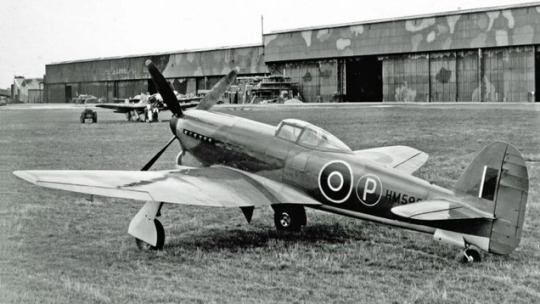

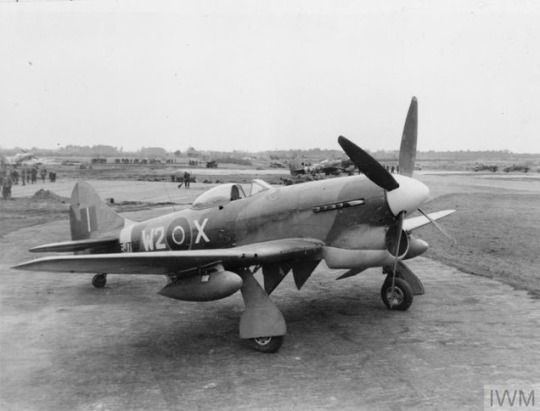

2nd September 1942. First flight of the Hawker Tempest fighter. A major redesign of the Typhoon, the addition of a new laminar flow wing led to a significant improvement in performance. Despite a protracted development process, the Tempest emerged as one of the best piston-engined fighters of the Second World War. Fast, manoeuvrable and heavily armed, the type had an impressive impact despite its late arrival.
Though the first kills claimed by Tempests came over Bf109s on 8th June 1944, its main baptism of fire came during the V-1 offensive against southern England. Here, their high speed of over 400 mph was a key asset. Tempests destroyed over 800 V-1s, almost half of the total destroyed by Allied aircraft. A number of pilots amassed impressive individual totals, including Sqn Ldr Joseph Berry of 501 Squadron, with 59, with seven on 23rd July alone.
As the V-1 offensive declined and German forces retreated, Tempests began to operate from airfields on the continent. Designed as high-performance interceptors, they proved a match for any Luftwaffe aircraft, shooting down over 200 including several jets. However, they were also increasingly used for ground attack missions, with their 4x20mm cannon being highly effective against trains and vehicles. Rockets weren’t carried during the war, while only a small number of sorties were flown with 500lb bombs, shortly before VE Day.
In the postwar period, the standard Mark V Tempests were joined - and partially replaced - by the Mark II, an even faster variant equipped with a Centaurus radial engine. There was also the Mark VI, a specialised fighter-bomber with an improved Napier Sabre engine. However, the widespread introduction of jets soon saw a decline in the Tempest fleet and they had left frontline squadrons by 1950. Aircraft converted to target tugs, however, continued to serve until 1955.
Pictured:
1) The first Tempest to fly was Mark V HM595, which shared the tailfin and original ‘car door’ cockpit of the Typhoon. These would change before the type entered service.
📷 baesystems.com
2) The Commanding Officer of 486 Squadron RNZAF, Squadron Leader J H Iremonger, standing by the cockpit of Hawker Tempest Mark V at Newchurch. This unit was part of 150 Wing, sharing the airfield with 3 and 56 Squadrons.
📷 IWM (HU 92148)
3) Tempest of 80 Squadron RAF equipped with drop tanks at a Dutch airfield in late 1944. The unit was primarily flying armed reconnaissance missions, tasked with attacking any targets they encountered in a given area.
📷 IWM (MH 6860)
4) Hawker Tempest TT Mk.5, carrying a target winch pod under the port wing. These aircraft replaced the much slower types previously used as target tugs, such as the Miles Magister.
📷 IWM (ATP 16813B)
@JamieMctrusty via X
11 notes
·
View notes
Text

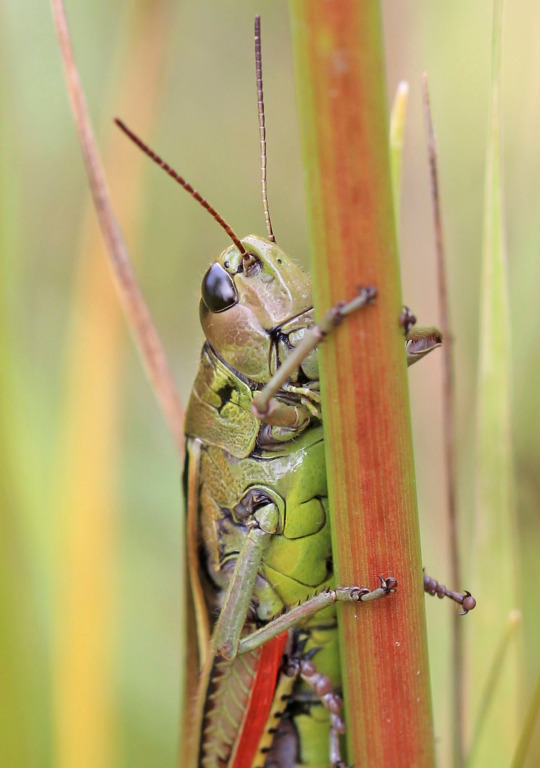


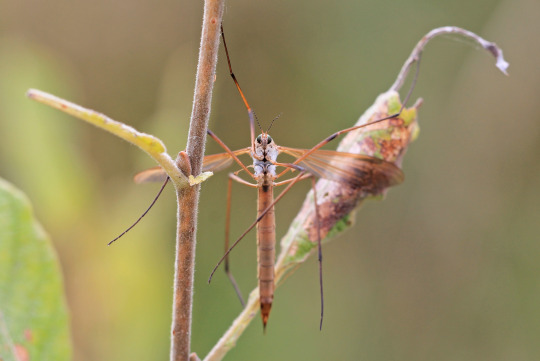
Life around a small pond: Southern Hawker/blågrön mosaikslända, Large Marsh Grasshopper/kärrgräshoppa, a very young Common Toad/vanlig padda and Marsh Crane Fly/kärrharkrank. Sätraskogen Nature Reserve in Stockholm, Sweden (August 30, 2013).
323 notes
·
View notes
Note
Black Dahlia for Florrick?
thank you for the prompt and opportunity to drop Florrick Lore TM!
Florrick (& Shadowheart & Nocturne & ?Viconia?), Black Dahlia - a lie
A half-elf with black hair and a long scar across her cheek. A tiefling with purple hair and short horns. Both fifteen or so, similar in height and build, clean and tidy, dressed in similar nondescript clothing—so nondescript that it could only be deliberate. Manip Florrick doesn't deviate from her assigned post at the southern gate of Bloomridge Park, but she watches carefully from afar, cataloging the information she'll need to fill out the report form. She needn't look up the law reference; she knows the Baldurian Penal Code nearly by heart. Article Eight, Crimes Against Persons, Section Twenty-One, Petty Theft and/or Pickpocketing, Sub-section Four, Offenses by Minors With or Without Prior Offenses. But the pair—furtive, anxious—pass by the picknickers, the passed-out drunks, and the hawkers, seemingly relieved just to stroll the sunny walkways and dip their feet in the pond, if only for a short while before they disappear, again, through the gap in the northern fence. No harm done, and so Florrick pays them no further mind until an hour or so later, when a woman approaches and asks if she'd seen a young half-elf with black hair and a long scar, and a tiefling with purple hair and short horns. There's something off about her—something in her eyes, dark and empty, as if sucking the light out of the very sky above them. And then there's something nagging at the corner of Florrick's mind, needling, prodding, seeking. "My apologies, ma'am," Florrick replies evenly, slamming the iron of her mind shut, washing over in relief as the invading sensation withers and dies. "I'm afraid I've seen no such children today."
17 notes
·
View notes
Text

Southern Hawker
A southern hawker dragonfly perched on a hawthorn branch, at RSPB Fowlmere.
#aeshna cyanea#cambridgeshire#canon#canonuk#dragonflies#dragonfly#fowlmere#insect#insects#invertebrate#invertebrates#minibeast#minibeasts#nature#nature reserve#outdoors#rspb#rspb fowlmere#southern hawker#summer#wildlife
6 notes
·
View notes
Text




September 6, 1991 - Jeffrey Thurnher for Entertainment Weekly.
90210
ADVICE TO the makers of Guess? jeans, the hawkers of Clearasil acne balms, the scholars of A.C. Nielsen ratings-to anyone, in short, who urgently needs to know what teenagers are watching on TV these days: Forget about the dweeby viewer diaries. Skip the fusty focus groups. Just follow the shrieking fans.
Note that Fox's Beverly Hills, 90210, now in its second season, makes young women scream and young men whoop. Study the mail sacks that arrive at Fox daily, bulging with the letters of thousands of teen viewers who urgently need to know what's going to happen next to their favorite 90210 characters ─ characters called Brenda and Dylan, Brandon and Andrea, Kelly and Steve, and David and Donna.
Observe the contagious hysteria brought on by thousands of consumers squished together in shopping malls for hours awaiting the appearance of their favorite 90210 actors ─ actors called Luke Perry and Jennie Garth, Shannen Doherty and Ian Ziering.
Listen to the household silence that reverberates for an hour each Thursday night ─ no phones ring, no Guns N' Roses bloom ─ as millions of sets fix on Fox.
Measure the decibel levels and get with the program: The shriekingest show on the air today is a soapy drama about the lives of eight students at Southern California's fictional West Beverly Hills High, class of Right Now.
The plots of Beverly Hills, 90210 revolve around the lives of teenage twins Brandon and Brenda Walsh (Jason Priestley and Shannen Doherty) ─ recent transplants, along with their down-to-earth parents, from the heartland of Minneapolis. In past weeks, boosted by a savvy programming decision to run all-new episodes in July and August while other shows lounged in repeats, 90210 has become Fox's most popular series, bigger this summer than The Simpsons and Married... With Children. First in the hearts of teen viewers on any network, any month (with a solid 58 percent of the adolescent audience), the show gives NBC ratings buster Cheers a run for its money in the 9 p.m. time slot. When teen viewers go back to school this week, so do the students at West Beverly; the new semester starts on Thursday, Sept. 12. That Priestley is teen-angel hunky and Doherty is pouty-pretty doesn't hurt; these twins are zit-free dreamboats. But 90210 zings heartstrings for deeper reasons, too. To fans, the show is, well, like life. Only cuter. Neater. Cooler. The kids at West Beverly mess up and move on in ways that never made the storyboards for Head of the Class. They drive nice cars and wear great jeans (a 90210 clothing line is on the drawing board; so are authorized and unauthorized books about the cast, and a quarterly magazine). But they also know about sex and AIDS. They know about drunken driving and alcoholic parents. Many are children of divorce. They know about drug abuse and date rape. They struggle with questions about sex: how far, how fast, how scary, how safe? Life is photogenic in this affluent zip code, but that doesn't make things any easier. To the 90210 audience, this is a great relief.
To veteran producer Aaron Spelling, whose company makes Beverly Hills, 90210, this is also a great gig: In July, Spelling took a Fox order for 30 new episodes-seven more than the usual invoice.
"The core audience was always aware of it," says executive producer Charles Rosin. "It's just that in calendar year '91, the network really promoted the show." Which is more than it did when the series debuted last fall. Muffled by its original name, Class of Beverly Hills, and hidden in a flurry of other teen-oriented programs including Fox's Parker Lewis Can't Lose and NBC's Hull High and Ferris Bueller (the latter two now canceled), the series was barely hyped, mildly received. Many saw it as just one more shallow show from the same Spelling glitz factory that gave us Dynasty and The Love Boat ─ a trendy soap starring a bunch of little-knowns (including Spelling's 18-year-old daughter, Tori).
“I like playing Brenda because they always give me challenging things to do and throw heavy drama at me. For some reason, I’m able to cry easily” ─ Shannen Doherty.
But teens were watching, and talking about it in school the next day. Besides, the show was getting better: The characters were becoming less stereotypical. The story lines (many by Steve Wasserman and Jessica Klein, who have also written for CBS' Northern Exposure) got tougher. The acting became more self-assured.
After the third episode, the producers knew the show was working. "But no one knew about it," recalls Rosin, who was most recently Northern Exposure's supervising producer. "So we developed a scenario to promote it."
The strategy paid off big, especially after Fox featured the series in July to launch the network's new "52-week" program plan, which intersperses reruns with a continuing stream of new stories.
"I knew the fans were there," swears creator and coproducer Darren Star. "Teenagers really respond to what they like. And they like to see something that says, 'I'm not alone.' Look, on our show, the dysfunctional family is the norm."
Star inevitably calls his baby "teensomething." And he inevitably says he was probably most like Brandon in high school ─ but wished he were more like broody, sensitive Dylan McKay, played by Luke Perry. Dylan is Brenda's some-time boyfriend. Brenda and Dylan had sex once, at the end of this year's school season. Brenda thought she might be pregnant but wasn't. She decided she wasn't ready for sex. She decided she wasn't ready for Dylan. They're now in romance limbo, pining and unsure. While network types wrestle with just how much controversial sex is enough ─ but not too much ─ in the season to come (now that more advertiser eyes than ever are watching), eight trillion teenagers understand Brenda and Dylan. Totally.
"ONCE DYLAN'S HAD a woman, she stays had." That's Luke Perry talking about the Brenda-Dylan Thing. Perry, a onetime soap actor (Loving, Another World), is in his makeshift dressing room in the anonymous Van Nuys warehouse that serves as the 90210 stage set (suburban Torrance High School substitutes as West Beverly for exterior shots). Perry's probably pushing 30, although, like almost everyone else in the cast, he coys up about his age ─ the better, they each avow, to preserve teenish illusions. He's bare-chested. He's bouncing a basketball. And he's being cool ─ charmingly, full-of-it cool. "We're the show that almost was on the network that isn't yet, and here we are, kickin' a little ass, if I do say so myself," he says himself in his smoky Dylan voice. Bounce. Bounce.
Two days earlier, on Aug. 10, Perry had made headlines when an estimated 10,000 shrieking fans at a Plantation, Fla., mall stampeded at the sight of him. Twenty-one people were injured, and the actor was hustled away by police ─ a promo stunt he says he won't be repeating. Was he upset?
"Feel my pulse," he dares, holding out a cool, bare wrist. "Pretty normal, huh?"
Yes, but what's normal in an industry where little-known young actors become wealthy heartthrobs overnight? Many in the cast smoke, with nervous, grown-up gestures. Some have just bought houses. Big, grown-up houses. All are feeling pretty excited, pretty jazzed, pretty dazed. They goof around a lot, and cut up with the crew. The guys in the cast slap and hug and talk about going skeet shooting together. And to a man they claim to have no girlfriends, that they're free agents. (The message: Female fans, there's hope!) The 90210 girls give and receive back rubs. To a woman, they've got boyfriends. (Hint: Guys, back off!)
They claim no tensions, these fragile egos with soft faces, no competition ─ nothing but comradely exhaustion.
"But I think we're all ready for a break!" That's Shannen Doherty sighing with an edgy giggle. Doherty, a screen veteran (one of the Heathers in the 1989 movie of that name and a graduate of NBC's Our House), is defensive, cautious, upset by recent reports that she is difficult on the set. "That's stupid stuff!" she says. There's a sleep-de-prived pallor beneath her Brenda makeup. She giggles again.
During one break, while director Charles Braverman and his crew of 90210-like techies hug and slap each other and set lights, 18-year-old Brian Austin Green blasts his boom box with friends ─ teen colleagues in a rap-rock band he has just formed. "David Silver," he says of the character he plays, "is the annoying guy nobody wants around, but they can't get rid of him." Jennie Garth, who plays Kelly, the "fast" girl, plops down with Gabrielle Carteris, who plays Andrea Zuckerman, the brain. "I think Andrea's really going through a budding time now," says Carteris.
Tori Spelling hunkers in her dressing room with her teddy bear, Stanley. "My character, Donna Martin, is kind of ditzy," she says in a tiny voice. "Into money. She puts down people who aren't popular. I think she's more sensitive than that, though. I think she's really funny." Ian (that's EYE-An, like it says on his license plate) Ziering wanders out to hug and slap his buddy Luke. "Steve Sanders [his role] thinks he can get away with flashing a smile and buying his way out of trouble." Ziering flashes his own smile; he's in actor heaven. "I feel the writers are so capable and I'm not just blowing sunshine up anybody's tush!"
And then there's Jason Priestley. "Jay-Man, Jay-Bob, Jay-Bird!" raps Luke Perry. "Let me show you my Jason pose!" Perry stands in a hustler's slouch, thumbs hooked into waistband. Priestley hugs and "Hey, man!"s with the best of them. He's hot. He's cool.
"Brandon's going to get into a little bit of trouble this season, which I'm looking forward to," Priestley hints. He drags on a cig.
Trouble?
"Well, I could tell you ─ but then I'd have to kill you. Top secret around here, I'm telling ya." Priestley smiles a Priestley smile. A makeup girl comes over for a hug, or maybe it's a kiss. "This is not a high-pressure show to work on," director Braverman says, dryly. Of course not; he's in the middle of receiving a back rub. High school was never like this.
No, wait, maybe it was: a lot of excitement, a lot of requirements, and tons of pressure to be popular.
"All shows have their peak," sums up Tori Spelling, who probably heard a thing or two about the subject growing up. "Right now we're in our peak. I don't want to think about the future. I just want to enjoy it. After we did the pilot, everybody was, like, 'What show are you on? 902-what?' Nobody heard of us. And now-now our goal is to beat Cheers one day, beat them in the share points. Or something."
The students and fans of Beverly Hills, 90210 are cheering: Go, Team, Go
#shannen doherty#Luke Perry#Jason Priestley#entertainment weekly#Jeffrey Thurnher#1991 entertainment weekly#1991 Jeffrey Thurnher#1991 photoshots#1991#1991 shannen doherty#covergirl#1991 article#1991 magazine#1991 magazine article#1990s#1990s shannen doherty#1990s magazine#1990s article#1990s photoshots
8 notes
·
View notes
Text
Alfred, Alexia, and the Dragonfly
The infamous video of Alfred and Alexia torturing a dragonfly and feeding it to the ants can be found twice on Rockfort Island. The first time, you see it in the room with the Lugers and then again in Alfred’s office as the startup of his PC. Of course, it has a deeply person meaning to Alfred. We know about his obsession with his sister, and Alexia is in there as well. Maybe the video is the only one with her or the last one that was taken before her cryogenic sleep. It makes sense that Alfred would hold dear something like this. But is it just about Alexia, or is there more to it? After all, we even have to watch it twice.
The twins do not talk the entire time and barely interact during the video. The only noteworthy interaction happens during the last scene, in which Alfred and Alexia share a knowing gaze. The way they look at each other makes it clear that there is more to the whole scene than what meets the eye. It had a deeper meaning, which only they could understand. A secret they share with each other. Words are not necessary.

When I first played Code Veronica X, I assumed the video mainly existed to show the cruel and twisted nature of the twins, while it also foreshadowed what Alfred would become. But after replaying the game last year, I changed my opinion. The video isn’t about Alfred and Alexia’s general cruelty or torturing of defenseless creatures. The content represents something more personal to them - their revenge on Alexander.
It was never said when the video was recorded, but the twins aren’t small children anymore. Based only on their appearance, I would estimate them to be between 10 and 12 years old. Now, considering the content of the video, I think it was recorded after Alfred discovered the truth about their origin and after they came up with a revenge plan as the earliest possible date. However, it is more likely that they had already executed their plan some time before.
Let’s take a closer look. First of all, the visual language. The ants symbolize Alfred and Alexia. Alexia sees herself as an ant queen and refers to Alfred as a soldier ant. The dragonfly is Alexander. It is more obvious for Alexia’s third form, but Alexander’s mutated form resembles a dragonfly too. He has three appendages on his back, similarly arranged like three of four wings of a dragonfly. Additionally, these appendages are long and thin, like insect legs. In Darkside Chronicles, he even uses them to move around. Also, Alexander’s real legs are bound together with the rug, which makes his lower body look vaguely like the elongated abdomen of the insect. The belts even give it a segmented appearance.
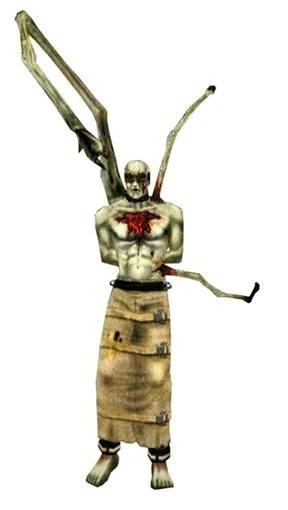

The last similarity isn’t related to the real animal but to an item. To activate the self-destruct system, you have to assemble a dragonfly key. On the underside of this key is a prominent red jewel in the middle of its thorax, similar to Alexander’s exposed heart.

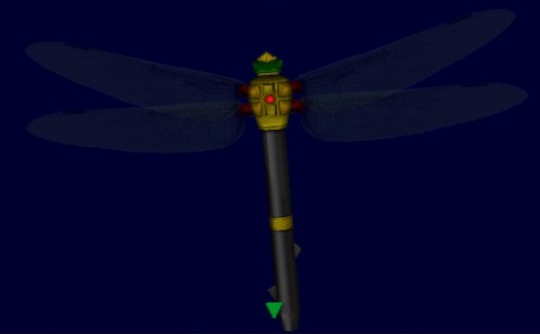
The dragonfly in the video is rather large. It has a blue abdomen with black markings and a yellow thorax. I tried to find out what dragonfly species we see there and found three possible candidates. One is the green hawker (Aeshna viridis), another is the southern migrant hawker (Aeshna affinis), and the last one is the emperor dragonfly (Anax imperator). (I’m not a dragonfly expert, though. Maybe there are other ones that fit better.)
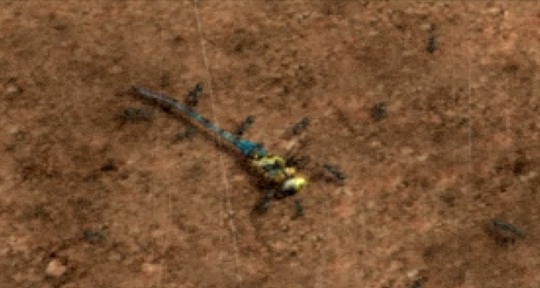
The abdomens of the green hawker and southern migrant hawker are also blue, the thorax is yellowish-green, and they have black markings on their bodies. The emperor dragonfly has an apple-green thorax rather than a yellow one, but it would fit the other criteria. Other dragonfly species with a similar color palette have either more black markings, differently colored spots on the abdomen, a different body shape, or are too small. In all three cases, only the males have this coloration. The females are green or yellowish green instead of blue. Selecting a male dragonfly specifically could be another reference to Alexander. As for the emperor dragonfly and the southern migrant hawker, contrary to the green hawker, they also inhabit Great Britain, which delivers another connection to Alexander. And while Alexander is, of course, only an earl, not an emperor, an emperor dragonfly could still refer in a wider sense to his peer status.
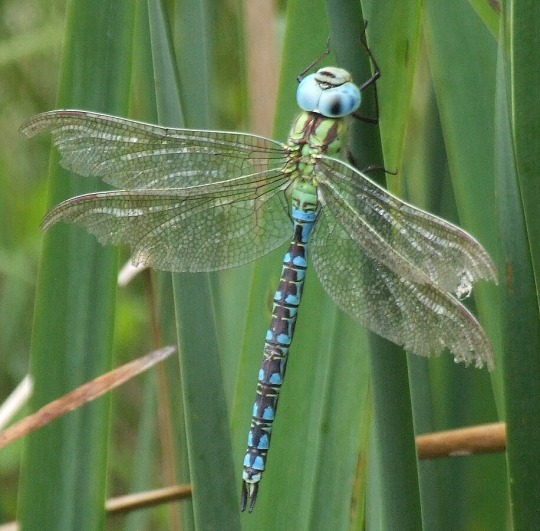
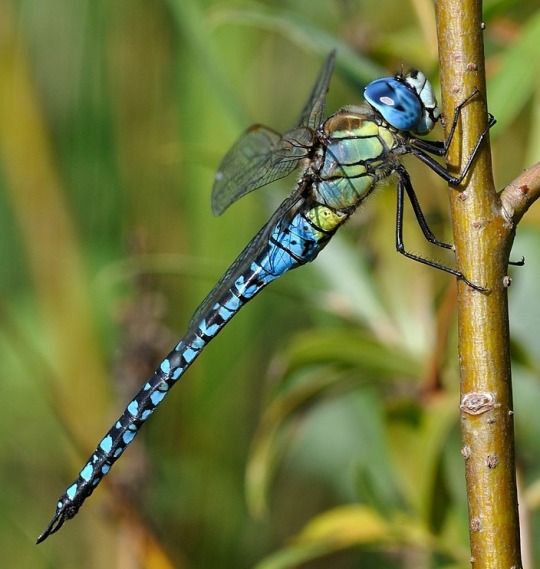

From left to right: green hawker (male), southern migrant hawker (male), emperor dragonfly (male).
The general events of the video reflect what happened to Alexander. Only Alfred interacts with the dragonfly. He was also the one who initiated the revenge plot after discovering the truth about himself and Alexia, as well as the one who suffered subjectively more under his father. Alexia stays passive the whole time and only watches her brother, while in real life, she is the one who has carried out the experiments, not Alfred. However, even if she does not join her brother here, Alexia still contributes by providing an instrument to execute the allegorical revenge - her ants (and the virus in reality).
Instead of simply killing the insect, Alfred rips out its wings, making it incapable of flying away. Like the dragonfly, Alexander was still alive when he met his fate. The twins tranquilized their father before Alexia injected him with the virus, which caused his transformation. Afterward, Alexander’s confinement continued, and he was chained for years in agony, probably awaiting his death if he was still capable of having coherent thoughts.
The dragonfly’s death is not in vain. Feeding the insect to the ants serves a purpose. The ants can feast on it, and the colony can grow. Alexander’s life wasn’t wasted either. Alexia directed Alfred’s revenge plans from simply killing their father to using him for research purposes. Their “useless father” could contribute for once to Alexia’s research and the Ashford family. Even though the experiment was a failure, Alexia was still able to use the data she required from it for her benefit.
Why all the effort with the cryptic symbolism? Alexander was a terrible father. Probably not intentional, but this isn’t an excuse. He took the childhood of the twins for the sake of his own ambitions. He used Alexia to fulfill what he could not achieve and disregarded Alfred for not being as intelligent as his sister. Finding out that they were the result of a genetic experiment was the final straw, especially for Alfred. Their father then got what he deserved, according to them. Alfred hated Alexander with a passion. It must have been a great feeling to get rid of him, and to celebrate it, he (maybe Alexia too) wanted a keepsake. Direct photos or videos of their father were out of the question. Alfred even wrote in his diary that they have to be careful so that Harman (their butler) doesn’t discover what has happened to Alexander. The dragonfly video works well. It is cryptic enough that no one could understand its meaning without more background knowledge. People who see it randomly would assume it is a disturbing and slightly eerie home video. Alfred and Alexia, on the other hand, know exactly what it is about. It’s so important to Alfred because it does not only show Alexia but also their victory over Alexander. The insects are nothing more than involuntary actors. The real dragonfly and what is happening to it is secondary. The symbolic meaning behind the dragonfly’s death struggle holds significance.
Some notes as a closure that didn’t fit in the rest of the text: What makes the video so creepy, except for the circumstances you find it in, is the twins’ acting. Without them and out of context, the dragonfly video wouldn’t even be that unsettling if you consider some facts. The video was recorded in the Antarctic base. Dragonflies do not inhabit Antarctica. This means the dragonfly was bred there. The twins did not randomly catch it for the purpose of torture. What’s the purpose of breeding dragonflies? I assume it’s for (virus) research. We know that Umbrella performed experiments on other invertebrates. So, if dragonflies are bred in the lab anyway, why not use some as a protein source for the ants as well? More common insects for feeding ants would be mealworms and meal beetles, house crickets, flies and fly larvae, roaches, and plant lice, though. Also, dragonflies are predators and attack everything they can overpower, including other dragonflies. And unlike ants, they can fly. It makes sense to remove the wings first to prevent it from flying away or attacking the ants. Sure, ripping out its wings and not killing it first is still cruel, but at least the ants will take care of this soon.
#resident evil#alfred ashford#alexia ashford#alexander ashford#ashford twins#🩸🌙#meta#re meta#uploading this video was the most bug-ridden thing i’ve ever encountered on tumblr#at least so far
24 notes
·
View notes